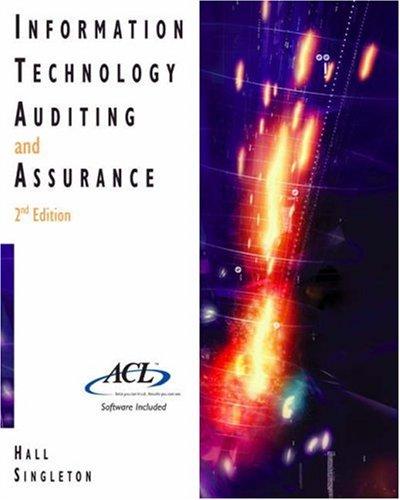Question
Please help me with this project Please complete the project below by the due date and submit it for grading. I expect that you will
Please help me with this project Please complete the project below by the due date and submit it for grading. I expect that you will upload (i) your report as a Word document, and possibly (ii) an Excel file showing all calculations. Please report the results of all your calculations in your Word document so that your report is self-contained. I will take a look at your Excel file to determine whether your calculations are all correct. Abstract The number of college students who are looking for jobs to support themselves is growing. In recent years, transportation network companies (TNCs) have exploded in popularity. The purpose of this case is to evaluate an investment decision (buying a car) to drive for the most famous TNC, Uber, by using some capital budgeting tools. Introduction Uber Technologies Inc. is a transportation network company (TNC) founded in 2009 in California, U.S. TNCs are rideshare companies that connect riders and drivers through smartphone applications. As of April 2017, Uber operates in 79 countries and over 580 cities (https://www.uber.com). Valued at $66 billion in August 2016 (http://www.cnbc.com/2016/06/08/ubers-66-billion-valuation-may-ride-on-shaky-foundation.html) without owning any cab, Ubers business model was copied by several other companies, eg. Lyft, Side Car, and Ola Cabs. A common characteristic of all these TNCs is their ability to provide higher quality taxi / paratransit services at a much lower cost than traditional taxi companies. Uber faces several challenges from legal authorities as well as competitors and taxi companies. Economists views on TNCs and on the deregulation of the traditional taxi market are diverse. Moore and Baker (2006) reported that slight majority of the published research was in favor of deregulating the taxicab market. A more recent survey conducted at the University of Chicagos Booth Schools Initiative on Global Market Forum (IGM Economic Experts Panel 2014) indicated stronger support for deregulation. Horpedahl (2015) examines the coverage of economics bloggers of TNCs. In most cities in the U.S. and in other countries, there is no free competition in the taxicab market. As a result of this, TNCs sometimes operate in unclear legal frameworks. Opponents of TNCs argue that the avoidance of larger insurance policies required by traditional taxicabs lowers the costs of TNCs. Drivers working for TNCs usually see that as a part-time job in addition to their regular jobs. The purpose of this case is to evaluate the opportunity to drive for Uber by using some Capital Budgeting tools. Discussion Questions Michael Williams is a freshman in an undergraduate finance program in Dallas, Texas, who is looking for a part-time job. He does some research on Uber and collects the following data from various forums where current drivers are posting: Average earnings per hour: $22 Average trips per hour: 2.6 Average length of trip: 7.7 miles Average duration of trip: 17.6 minutes The data looks attractive to Michael. He considers buying a used hybrid car for $16,000. After doing some research on various lenders, he finds out that he can obtain a 4-year loan at 5.99%. monthly insurance on the new vehicle will be $80. Estimated salvage value of the car at the end of the 4-year period is $6,450. The new hybrid car that Michael is planning to buy has a fuel efficiency of 50 mpg (miles per gallon) and he expects gas price to be around $2 per gallon. a. Assuming that he can drive 20 hours per week on average for the next four years, what is Michaels expected monthly revenue? b. If he buys the car, what will his monthly car loan payment be? c. If Michael does not drive for Uber, his alternative is to work at the campus for $12 per hour. Assuming that he can work 20 hours per week, what is his monthly opportunity cost of driving for Uber? d. What is the expected monthly cash flows (months 1 47) that Michael can generate? e. What is the last month expected cash flow, assuming that Michael will be able to sell his car at its salvage value? f. Assuming that the rate of discount (alternatively referred to as the required rate of return) is 5.9%, what should Michaels decision be? (ie. Should he sign up with Uber as a driver)? I need to show all the calculations please!
Step by Step Solution
There are 3 Steps involved in it
Step: 1

Get Instant Access to Expert-Tailored Solutions
See step-by-step solutions with expert insights and AI powered tools for academic success
Step: 2

Step: 3

Ace Your Homework with AI
Get the answers you need in no time with our AI-driven, step-by-step assistance
Get Started


